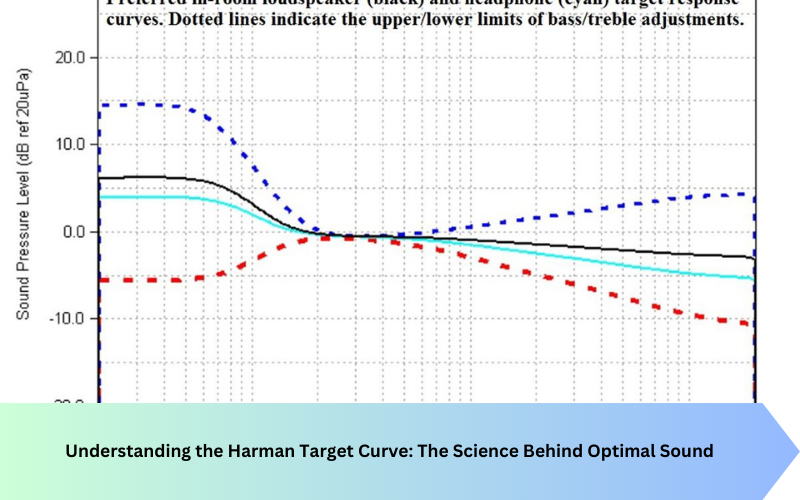Introduction to the Harman Target Curve
Imagine listening to your favorite song and feeling as if the artist is performing right in front of you. This immersive experience isn’t just a happy coincidence; it’s rooted in science—specifically, the Harman Target Curve. For audiophiles and casual listeners alike, understanding this fundamental concept can transform how we enjoy music and sound.
The Harman Target Curve serves as a benchmark for optimal audio reproduction. It represents what most people perceive as “natural” sound when listening through speakers or headphones. But how did this curve come to be? And why does it hold such significance in the world of audio technology?
As we dive into the fascinating history, scientific principles, and practical applications behind the Harman Target Curve, you’ll discover why it matters not just for professionals but for anyone who appreciates high-quality sound. Whether you’re an aspiring audiophile or simply love great music, grasping this concept will elevate your auditory experiences like never before. Let’s explore!
The History and Development of the Harman Target Curve
The Harman Target Curve has a fascinating history rooted in decades of audio research. Its origins trace back to the late 20th century when engineers at Harman International began exploring how listeners perceive sound.
Through extensive testing, researchers collected data from various listening environments. They analyzed listener preferences across different genres and setups, aiming to define an ideal frequency response. This effort led to the establishment of what is now known as the Harman Target Curve.
As technology evolved, so did methods for measuring sound quality. Advances in digital signal processing made it easier to implement these findings into consumer products like headphones and speakers. The curve became a benchmark against which many brands would measure their audio equipment.
Today, it serves not just as a guideline but also as a standard embraced by audiophiles and manufacturers alike, transforming how we experience music and sound fidelity.
The Science Behind Optimal Sound
At the heart of audio quality lies the intricate balance of frequencies. The human ear is finely tuned to perceive sound in specific ways, and this sensitivity drives the science behind optimal sound reproduction.
The Harman Target Curve represents a standardized frequency response that aligns with listener preferences across various environments. It reflects extensive research into how we perceive balanced audio.
Bass frequencies should be present but not overwhelming, while mids carry clarity without overshadowing highs. This interplay creates an immersive listening experience.
Psychoacoustics plays a crucial role here; it studies how our brain interprets sound waves. Research indicates that when audio matches the Harman Target Curve, listeners report higher satisfaction levels.
Understanding these principles leads manufacturers to design speakers and headphones that resonate more authentically with our auditory senses, enhancing enjoyment and engagement in every note played.
How the Harman Target Curve is Measured and Applied in Audio Technology
The measurement of the Harman Target Curve involves extensive research and testing. Engineers use advanced technology to capture listener preferences across various genres and audio systems.
Controlled listening tests are central to this process. Participants listen to different sound profiles while providing feedback on their experiences. This data helps researchers develop a standardized response that reflects what most listeners find pleasing.
Once established, the curve can be applied in various audio technologies—speakers, headphones, and even soundbars. Manufacturers utilize this benchmark during design and production phases.
By integrating the Harman Target Curve into products, brands ensure that their audio equipment meets consumer expectations for quality sound reproduction. The result is an immersive experience tailored to a wide audience’s tastes.
Benefits of Using the Harman Target Curve in Speakers and Headphones
The Harman Target Curve has revolutionized the way we experience sound through speakers and headphones. By adhering to this scientifically backed standard, manufacturers can create audio devices that deliver a more balanced listening experience.
One immediate benefit is improved clarity across all frequencies. Listeners can enjoy music as it was intended, with vocals standing out without overpowering other instruments. This ensures every note resonates harmoniously.
Another advantage lies in enhanced compatibility with various genres. Whether you prefer classical symphonies or modern pop hits, the Harman Target Curve adapts well to diverse musical styles, offering a consistent auditory pleasure.
Additionally, audiophiles appreciate how this curve helps reduce listener fatigue during long sessions. A refined frequency response means less distortion and strain on the ears—perfect for marathon listening sessions or late-night jams.
Investing in audio equipment designed around the Harman Target Curve may also lead to higher resale value due to its recognized quality among enthusiasts.
Common Misconceptions about the Harman Target Curve
Many people assume that the Harman Target Curve is just another marketing gimmick. In reality, it’s based on extensive research and listening tests conducted by audio experts. This curve represents what most listeners prefer in terms of sound.
Another misconception is that this curve applies universally to all audio devices. While it serves as a guideline, individual preferences can vary significantly from one listener to another.
Some believe that adhering strictly to the Harman Target Curve limits creativity in sound design. However, many manufacturers use it as a foundation while still allowing for unique tuning options.
There’s confusion about its relevance to different genres of music. The Harman Target Curve aims at creating an enjoyable experience across various styles rather than focusing solely on one type. Understanding these misconceptions helps clarify why this target curve remains significant in the world of audio technology.
Conclusion: Why the Harman Target Curve is Important for Audiophiles
The Harman Target Curve represents a significant advancement in audio technology, particularly for audiophiles seeking an optimal listening experience. This scientifically validated standard reflects what listeners naturally prefer when enjoying music or other audio content.
Understanding this curve helps consumers make informed choices about their audio gear. Whether you’re selecting headphones or speakers, knowing that they align with the Harman Target Curve can ensure a more satisfying sound profile. It emphasizes clarity and balance across frequencies, allowing every nuance of your favorite tracks to shine through.
This knowledge also fosters better discussions within the audiophile community. Enthusiasts can explore brands and models that adhere to this benchmark, leading to richer conversations about quality and preference.
For those who truly appreciate sound, embracing the principles behind the Harman Target Curve is essential. It not only elevates personal enjoyment but also encourages manufacturers to strive for excellence in their designs. The result is a thriving ecosystem where both creators and consumers benefit from a shared understanding of what makes great sound—perfectly suited to enhance any auditory journey.





